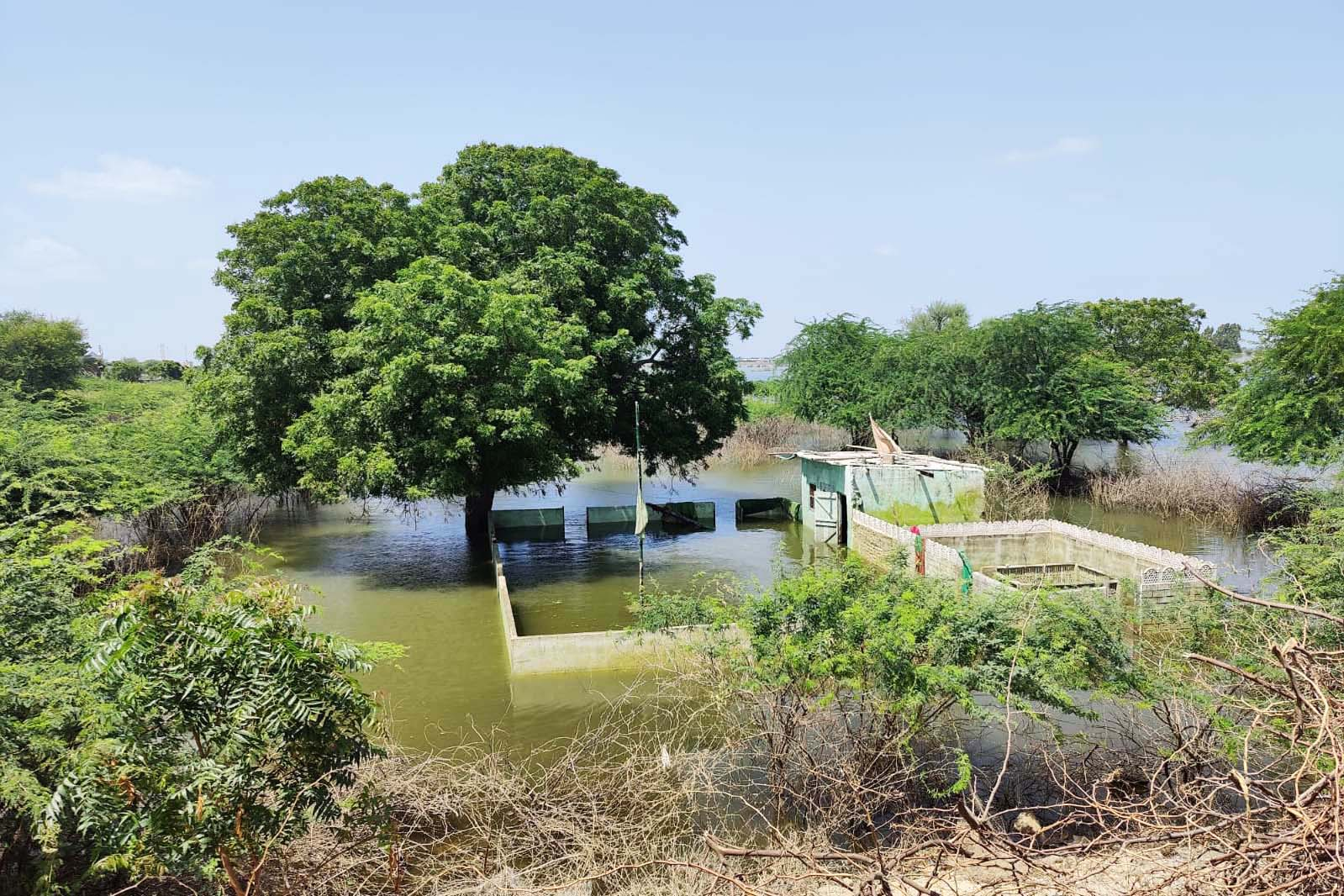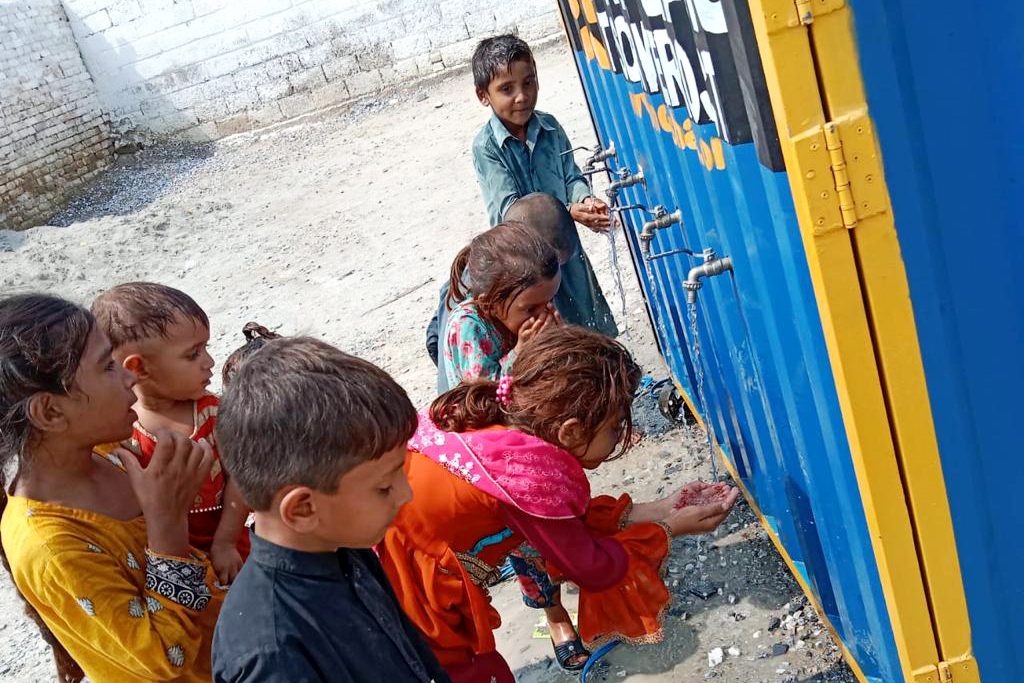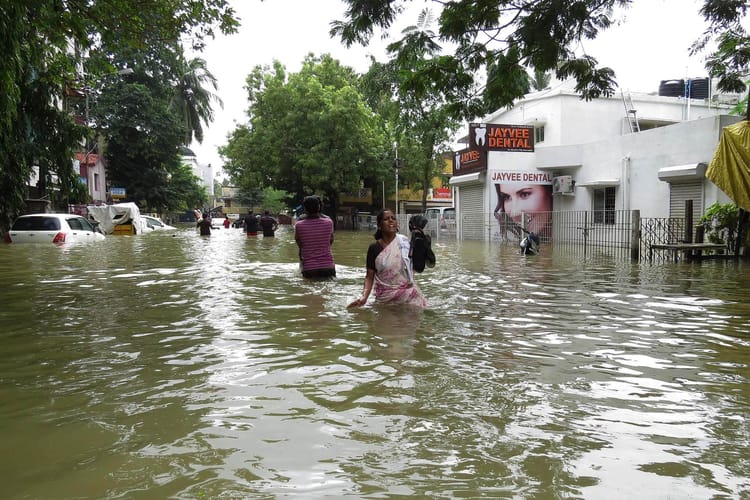Pakistan’s floods show the need for tech-based climate solutions

With intense rainfall that led to one-third of Pakistan being flooded, yet leaving people water-stressed, experts speaking to Rida Shah emphasise the need for better forecasting technology and preparedness, and finding innovative solutions to cope with climate-induced disasters.
Muhammad Rafique lost his daughter Sidra when the roof of his house collapsed during the heavy rains. Over the past weeks, devastating floods have wreaked havoc across Pakistan, affecting countless people like Rafique.
Subsequently, his house in Bhud village in the Khyber Pakhtunkhwa province of Pakistan was washed away in the floods. With a trembling voice full of grief and sorrow, he asked people to be sympathetic to him and the others affected by the catastrophic floods as they had no option but to sleep under the stars.
Abdul Salam, another resident of Bhud village, was also perplexed.
“My entire house collapsed. I lost my livestock. I have no means to make ends meet. I am an old man and I haven't received a single penny from the government, how am I going to survive?”
It was the same question that many voiced. They had survived the floods but their future survival appeared to be a question mark. And what could Pakistan as a nation do to prevent a repeat of the devastation?

Monster monsoon and its impact
For what the likes of Rafique survived were no ordinary floods. Pakistan received 2.87 times higher rainfall than the 30-year average. United Nations Secretary-General, António Guterres described it as a “monsoon on steroids”.
Combined with the fast-melting glaciers in the mountain ranges of Hindukush, Himalayas and the Karakoram, a third of Pakistan went under water. The unprecedented floods have displaced 33 million people and claimed more than 1,500 lives.
The floods have fundamentally altered the reality for millions in Pakistan. Surrounded by water that shows no signs of receding, families and children are forced to sleep next to pools of stagnant water contaminated by faeces and whatnot.
In communities that are still cut off by the flood water, survivors have no option but to drink this contaminated water. Naturally, it led to a public health problem.
“We see malnourished children battling diarrhoea and malaria, dengue fever and painful skin conditions,” said Abdullah Fadil, UNICEF representative in Pakistan, after visiting the Sindh province.
The director-general of WHO, Tedros Adhanom Ghebreyesus saw the health implications as a second impending disaster.
“I am deeply concerned about the potential for a second disaster in Pakistan: a wave of disease and death following this catastrophe linked to climate change, that has severely impacted vital health systems leaving millions vulnerable,” he said, after visiting the flood-affected areas.
Sindh, the province worst hit by the calamity, presents grave statistics about the emerging water-borne diseases in the aftermath of the floods. About 137,000 cases of diarrhoea, 4,000 confirmed cases of malaria and over 10,000 cases of dysentery have been reported in the last month in the province according to officials of the health department of Sindh.
Responsibility towards Global South
Though the effects of climate change are visible all around the world, it's the Global South that bears the brunt.
As Pakistan – already in the doldrums with an ailing economy and volatile political landscape – moves from one big disaster to another, there is a call for the international community to get involved.
Environmentalist Mariyam Shabbir reminded the developed world of their commitments to the Paris Agreement under which they are obliged to provide USD 100 billion per year in climate finance to climate-vulnerable countries.
“This assistance should not be seen as an aid for the developing world but as something the Global North owes the Global South for the damage they did to the climate,” said Shabbir.
She suggested that the case for vulnerable countries should be taken to the International Court of Justice and pursued rigorously in every forum. She urged the developing world to make a strong statement at the 2022 UN Climate Conference (COP27) to be held in Egypt this year.
Notwithstanding the dialogues needed for such involvement, problems on the ground needed immediate attention, to prevent an escalation of the diseases.

Making flood water potable
As lack of drinking water was leading to disease outbreaks, Bondh E Shams, a clean water start-up founded in 2014 by 29-year-old Pakistani Hamza Farrukh, brought relief. Using filtration technology powered by renewable energy, this innovation known as the OASIS Box converts flood water into clean drinking water.
Given the grievous situation, Bondh E Shams swiftly repurposed their solar-powered water filtration units, to provide an off-grid emergency solution in flood-affected areas.
“Within 72 hours, three solar water boxes were deployed at Pithoro, Bachaband and Dhoronaro villages in the Sindh province, to convert flood water into much-needed drinking water,” said Farrukh.
Natural calamities are unfortunately a familiar tale for Pakistanis as the country has been marred with floods, earthquakes and heatwaves throughout its 75-year history. Like many other local relief workers, Farrukh also expressed his disappointment with the country’s policy makers and urged them to adopt innovative solutions.




However, slow offtake is not only for innovative ideas but for government plans as well. Ahmed Kamal, Chairman, Federal Flood Commission of Pakistan, emphasised the need for immediate implementation of the National Flood Protection Plan-IV, developed in 2015 by the Ministry of Water and Power of Pakistan, and other government stakeholders, in association with Deltares, a Netherlands-based independent research institute.
Kamal spoke at length about how the Federal Flood Commission since its inception has been emphasising the need to enhance capacity-building mechanisms to counter disasters such as floods.
“We received meagre financing against the requirement and now the scale of damage is huge,” he said.
The National Flood Protection Plan estimated the cost of structural and non-structural measures to be around 1.4 billion USD for 10 years. Whereas the current damages are at a staggering 10 billion USD, 4% of the country’s GDP.
Better forecasting systems were not prioritised, according to Kamal. Presently, there is only one regional flood forecasting system in Lahore, the capital of the Punjab province. “The early warning systems in Pakistan are good for medium-range forecasting of 24-48 hours. But for long-range forecasting, there are significant deficiencies,” he said.
Kamal also pointed out that international donors such as the World Bank and European Union refused funding as these projects – conceived to provide protection against natural calamities – did not come under the category of development.

Post-disaster relief vs pre-disaster resilience
Seeing people in the depth of despair and helplessness, Afia Salam, a senior Pakistani journalist documenting the devastation, said that the numbers in reports do not give a glimpse of the human misery associated with such disasters.
"I have seen devastation before. I worked in relief and rehabilitation in 2010 floods, 2011 cloud burst in Badin and 2015 heatwave in Karachi. But this is on a scale never experienced before, in its extent and intensity,” she said.
“But laying all the blame on climate change would be disingenuous. The volume of rain and the direction it came from is climate change. But the non-functional drainage facilities, poor quality of infrastructure and non-existent disaster risk reduction plans are what our people have been hit by,” she added.
Kamal finds building dams as a flood mitigation solution with added benefits of water storage and hydro-power generation.
However, as he pointed out that if the funds presently being spent on post-disaster relief and rehabilitation are spent for pre-disaster resilience planning and protection, there would not even be a disaster.
On the other hand, Farrukh advocates innovative solutions, and rings true: “Policymakers tend to discount ideas on the basis of their ‘experience’. Sadly, age-old formulas no longer work. Challenges of tomorrow cannot be solved by the tools of the past. Climate change is real, is happening now and ‘experience’ isn’t really a relevant proxy for innovative thinking.”






Member discussion